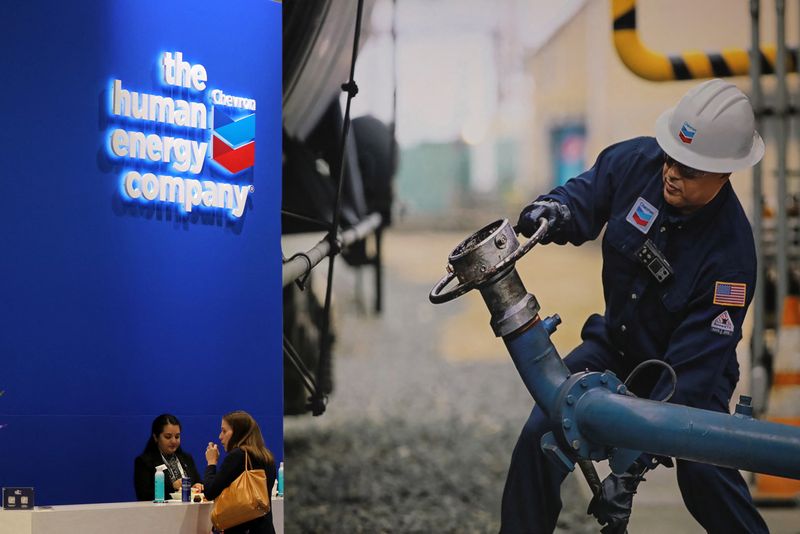By Sudarshan Varadhan and Lewis Jackson
SINGAPORE/SYDNEY (Reuters) - Woodside Energy Group and U.S. major Chevron (NYSE:CVX) are locked in a dispute over pay and job security with about 700 workers at four facilities in Australia that produce more than a tenth of the world's liquefied natural gas (LNG).
Here is what is expected in coming days, and what is at stake.
WHAT'S THE LATEST?
Nearly all workers at offshore platforms that supply gas to the Woodside facility have voted to authorise the union to strike, although unions have not made a call yet.
Woodside was "well off the pace on key bargaining issues including job security and remuneration," said Offshore Alliance, which is negotiating with the company on workers' behalf. The group is comprised of the Maritime Union of Australia and Australian Workers' Union.
Woodside, however, reported "positive progress" a day after the talks, adding that the parties had reached in-principle agreement on some issues, without elaborating.
Last week, Australia's labour regulator cleared the way for possible action by Chevron's workers if they vote in favour of it. Chevron has not commented on the current status of talks, and the union did not comment on its talks with Chevron.
WHAT'S NEXT?
Further talks are set for next Wednesday between the unions and Woodside.
In a social media post on Tuesday, the Offshore Alliance said members at the Chevron sites would begin voting "over the next week".
Industrial action could range from stopping work for 30 minutes to an all-out strike. The unions have the final say on carrying out any action, even if members vote in favour, and could move to extend the validity of the strike votes if talks run beyond 30 days.
Employers must be given seven days' notice ahead of any industrial action.
WHAT'S THE LIKELIHOOD OF SUPPLY DISRUPTION?
While any outcome, from agreement over wages and conditions to an all-out strike, is possible, some analysts downplayed the chance of significant supply disruptions.
Woodside and Chevron have said they have alternative options to keep operations going in the event of a strike, but did not elaborate.
Credit Suisse (SIX:CSGN) analyst Saul Kavonic said a prolonged outage across the three plants simultaneously was unlikely, as the government would not want "Australia's reputation for trade reliability to be tarnished."
However, he added, "The LNG companies need to tread cautiously, given the support unions have from the Labor government, and this may not be a battle worth fighting too fiercely."
"The unions have now created a further risk premium on gas prices. This alone may deliver enough additional revenue to the LNG companies to cover the union demands."
WHAT IS AT STAKE FOR GLOBAL LNG MARKETS?
Woodside's North West Shelf, along with Chevron's Gorgon and Wheatstone LNG offshore and onshore operations, supplies about 10% of the global LNG market and accounts for half of Australia's production, with exports mainly going to China, Japan and South Korea.
Any strike could disrupt exports and send up prices of the super-chilled fuel used for electricity generation.
The dispute pushed the weekly spot price for LNG delivery to North Asia up to $11.50 per million British thermal units (mmBtu) in the week ended Aug. 11, the highest in a month and up 5.5% from the prior week.
Future swap prices for October to December deliveries have jumped to $15 to $18 per mmBtu, data on Refinitiv Eikon showed on Aug. 16.

The strike threat sent Europe's benchmark Dutch natural gas prices soaring by as much as 40% from the close on Aug. 8, before they pared gains to close up 14% on Aug. 15.
Volatility in global gas prices despite relatively high inventories across Asia and Europe underscores market sensitivity to potential disruptions, heightened across most commodities after Russia's invasion of Ukraine last year led to record prices.